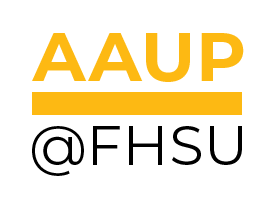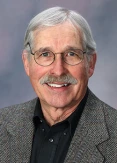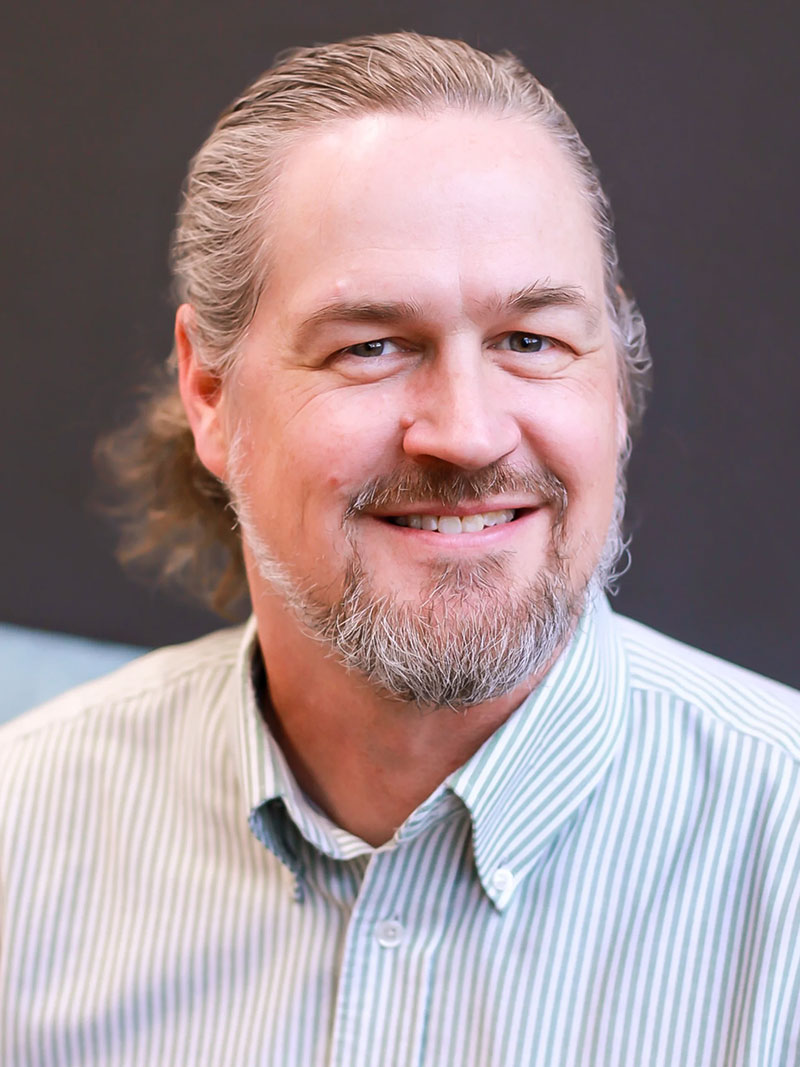
President
Eugene Rice
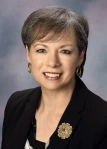
Vice President
Denise Orth
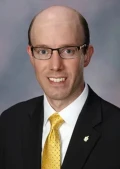
Treasurer
Cole Engel

Secretary
Shane Shartz
Emergence of AAUP@FHSU
After a series of events perceived by many as administrative overreach, a core organizing group began seriously discussing the possibility of collectively organizing in 1994. We began holding meetings to discuss our situation and the options available. An informal steering committee emerged, of which I was a part. We invited, and interviewed on campus, representatives of three organizations with which we considered affiliating. They were the International Brotherhood of Teamsters, the National Education Association, and the American Association of University Professors (AAUP). Since AAUP seemed to best represent our interests, we selected them. On January 15, 1996, the FHSU chapter of AAUP was officially formed, and in the recognition ceremony held in a room in the Memorial Union, 25 faculty members in attendance became the first charter members.
History of AAUP at FHSU
I was a part of the core organizing group of a few people who began seriously discussing the possibility of collectively organizing in 1994. I am happy to share my recollections about those early days.
In looking back to the early 1990s, university change was slower than today, but it was still present. Before collective bargaining on campus, administrators had few restraints on imposing structural and procedural changes within the University, regardless of the impacts on the faculty. Like today, the vast majority of administrative decisions were supported by the faculty, but some weren’t. Back then, when we disagreed with a decision, we had little recourse beyond sharing our opinions.
A cloud of faculty concern gradually developed over several years, as disappointing managerial decisions were added to the growing list. It is important to note that some faculty members were more upset than others, and some faculty members were not at all upset. There were quite a number who were supportive of essentially all managerial decisions. Thus, a division came to exist among the faculty, with some more supportive of the administration than others.
The big event I recall, that galvanized faculty resolve, was when the President of the University challenged the Faculty to give up their merit pay that year to help fund the library.
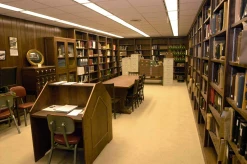 The Spring end-of- the-year all-faculty gathering was the setting (sorry, I don’t recall the year) for an important challenge by the President. Without announcing prior to this spring meeting that he would be making the challenge and overseeing a vote on how faculty merit money would be used, the President challenged the faculty who were attending the meeting to put their money where their mouths were. He suggested that all faculty merit money be transferred to fund the library in the next fiscal year. He then proceeded to call for a vote. I was there, and I was shocked. Few faculty members were present, and many administrators were present. (At that time, low faculty attendance and high administrator attendance was common at these spring meetings.) The President began counting out loud the hands raised for the vote, and I saw several administrators raise their hands to support faculty merit pay being used to fund the library.
Yes, that is correct. 1) There was no announcement before this meeting that this vote would occur, 2) fewer than half of the faculty were in attendance, 3) there was no monitoring of who had the right to vote on how faculty merit dollars would be spent, and 4) there was a simple counting of hands to determine the decision. Poof. It was done. I believe it was over $300,000 of faculty merit money re-routed away from faculty. (We later asked for documentation that this money went specifically to the library, and we were told that the accounting procedures did not allow such close monitoring of those dollars.)
After that event, many faculty supported increasing faculty influence in university decisions. We began holding meetings to discuss our situation and the options available. An informal steering committee emerged, of which I was a part. We invited, and interviewed on campus, representatives of three organizations with which we considered affiliating. They were the International Brotherhood of Teamsters, the National Education Association, and the American Association of University Professors (AAUP). Since AAUP seemed to best represent our interests, we selected them. On January 15, 1996, the FHSU chapter of AAUP was officially formed, and in the recognition ceremony held in a room in the Memorial Union, 25 faculty members were in attendance and became charter members.
Following that, we began the process of seeking State of Kansas approval to hold an election on campus to determine if FHSU/AAUP could legally serve as the collective bargaining agent representing faculty rights and interests on campus. That process was lengthy, but we did obtain the right to hold the election. One of the important points we emphasized was that “We are not anti-administration. We are pro-faculty.” I consider this to still be an extremely important point. Our mission is not to oppose the administration. Our mission is to represent faculty rights and interests, and we are sometimes forced to oppose administrative desires in the process of representing the rights and interests of the Faculty.
The results of the election made FHSU/AAUP the collective bargaining agent for the Faculty at FHSU. The date for the start of this representation was April 12, 1999, recognized by the Kansas Public Relations Board (PERB), Unit Determination Order, case #75-UDC- 1-1999, which was fully certified by PERB on May 5, 2000. The first FHSU/AAUP president was Dr. Tom Guss. In the first few years following FHSU/AAUP becoming the legal voice for FHSU faculty, I served one term as president and several terms as vice president.
The early days (before and after certification of the bargaining unit) were difficult but exciting. Within the leadership of our initiative, there was a division between people who were very forceful social activists and those who were more moderate. I was one of the moderates, and I considered the more extreme ideas and tactics to be too alienating to some members of the Faculty. Within a year or so following certification, the more moderate positions became the norm.
The above description reflects my memory of those early days of helping create a legal voice for the Faculty at FHSU. A final point I wish to make is that even when it seems that we don’t need FHSU/AAUP (when times are good and there is general agreement on campus), it is important that we preserve a legal voice. Thanks to the current leaders of FHSU/AAUP who work on our behalf.
Keith Campbell, PhD
Department of Sociology
Fort Hays State University
The Spring end-of- the-year all-faculty gathering was the setting (sorry, I don’t recall the year) for an important challenge by the President. Without announcing prior to this spring meeting that he would be making the challenge and overseeing a vote on how faculty merit money would be used, the President challenged the faculty who were attending the meeting to put their money where their mouths were. He suggested that all faculty merit money be transferred to fund the library in the next fiscal year. He then proceeded to call for a vote. I was there, and I was shocked. Few faculty members were present, and many administrators were present. (At that time, low faculty attendance and high administrator attendance was common at these spring meetings.) The President began counting out loud the hands raised for the vote, and I saw several administrators raise their hands to support faculty merit pay being used to fund the library.
Yes, that is correct. 1) There was no announcement before this meeting that this vote would occur, 2) fewer than half of the faculty were in attendance, 3) there was no monitoring of who had the right to vote on how faculty merit dollars would be spent, and 4) there was a simple counting of hands to determine the decision. Poof. It was done. I believe it was over $300,000 of faculty merit money re-routed away from faculty. (We later asked for documentation that this money went specifically to the library, and we were told that the accounting procedures did not allow such close monitoring of those dollars.)
After that event, many faculty supported increasing faculty influence in university decisions. We began holding meetings to discuss our situation and the options available. An informal steering committee emerged, of which I was a part. We invited, and interviewed on campus, representatives of three organizations with which we considered affiliating. They were the International Brotherhood of Teamsters, the National Education Association, and the American Association of University Professors (AAUP). Since AAUP seemed to best represent our interests, we selected them. On January 15, 1996, the FHSU chapter of AAUP was officially formed, and in the recognition ceremony held in a room in the Memorial Union, 25 faculty members were in attendance and became charter members.
Following that, we began the process of seeking State of Kansas approval to hold an election on campus to determine if FHSU/AAUP could legally serve as the collective bargaining agent representing faculty rights and interests on campus. That process was lengthy, but we did obtain the right to hold the election. One of the important points we emphasized was that “We are not anti-administration. We are pro-faculty.” I consider this to still be an extremely important point. Our mission is not to oppose the administration. Our mission is to represent faculty rights and interests, and we are sometimes forced to oppose administrative desires in the process of representing the rights and interests of the Faculty.
The results of the election made FHSU/AAUP the collective bargaining agent for the Faculty at FHSU. The date for the start of this representation was April 12, 1999, recognized by the Kansas Public Relations Board (PERB), Unit Determination Order, case #75-UDC- 1-1999, which was fully certified by PERB on May 5, 2000. The first FHSU/AAUP president was Dr. Tom Guss. In the first few years following FHSU/AAUP becoming the legal voice for FHSU faculty, I served one term as president and several terms as vice president.
The early days (before and after certification of the bargaining unit) were difficult but exciting. Within the leadership of our initiative, there was a division between people who were very forceful social activists and those who were more moderate. I was one of the moderates, and I considered the more extreme ideas and tactics to be too alienating to some members of the Faculty. Within a year or so following certification, the more moderate positions became the norm.
The above description reflects my memory of those early days of helping create a legal voice for the Faculty at FHSU. A final point I wish to make is that even when it seems that we don’t need FHSU/AAUP (when times are good and there is general agreement on campus), it is important that we preserve a legal voice. Thanks to the current leaders of FHSU/AAUP who work on our behalf.
Keith Campbell, PhD
Department of Sociology
Fort Hays State University Reaching Back a Little Further
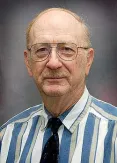 Keith referred to the “Big Event” that started the move toward collective bargaining. He is correct and I have just a couple of additions that happened a few years earlier.
A few years before collective bargaining began on FHSU campus faculty were upset about a couple of other unilateral administrative decisions. One was that President Hammond decided that faculty should not be paid the full amount for teaching summer classes. He thought it should be 50% — using the rationale that faculty were paid for service and research with their regular year salary. At that time I was the Faculty Senate president and was able to convince him that there was a service component to teaching in the summer and so he finally capitulated to paying faculty 75% for summer classes. Later he backed out on much of that as well. Around that same time several faculty members looked into forming a FHSU chapter for AAUP — to get their advice and support in defending faculty rights. Later another issue was the Administration deciding to declare courses being developed by faculty for teaching via Virtual College was the academic property of the University and not that of the faculty – that was a radical change from previous practice.
The two faculty that took the lead in the formation of FHSU-AAUP (not collective bargaining) was myself and Tom Guss. Tom was elected the first president of the organization (I was the first treasurer) and he had the Charter for our new organization.
Richard Hughen, PhD
Associate Professor Emeritus
Department of Philosophy
Fort Hays State University
Keith referred to the “Big Event” that started the move toward collective bargaining. He is correct and I have just a couple of additions that happened a few years earlier.
A few years before collective bargaining began on FHSU campus faculty were upset about a couple of other unilateral administrative decisions. One was that President Hammond decided that faculty should not be paid the full amount for teaching summer classes. He thought it should be 50% — using the rationale that faculty were paid for service and research with their regular year salary. At that time I was the Faculty Senate president and was able to convince him that there was a service component to teaching in the summer and so he finally capitulated to paying faculty 75% for summer classes. Later he backed out on much of that as well. Around that same time several faculty members looked into forming a FHSU chapter for AAUP — to get their advice and support in defending faculty rights. Later another issue was the Administration deciding to declare courses being developed by faculty for teaching via Virtual College was the academic property of the University and not that of the faculty – that was a radical change from previous practice.
The two faculty that took the lead in the formation of FHSU-AAUP (not collective bargaining) was myself and Tom Guss. Tom was elected the first president of the organization (I was the first treasurer) and he had the Charter for our new organization.
Richard Hughen, PhD
Associate Professor Emeritus
Department of Philosophy
Fort Hays State University 
